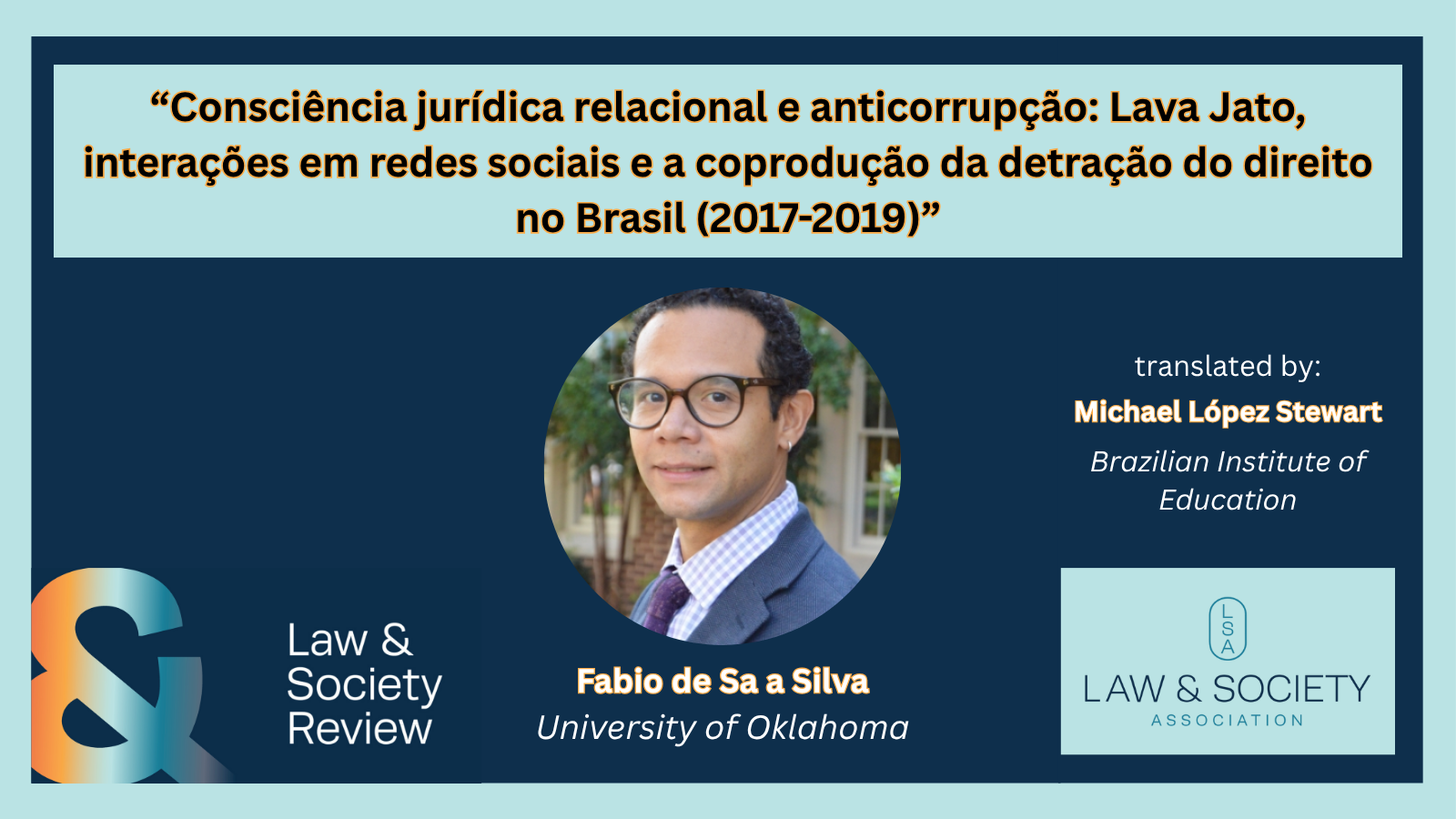“Relational legal consciousness and anticorruption: Lava Jato, social media interactions, and the co-production of law’s detraction in Brazil (2017–2019)”
Fabio de Sa e Silva’s mixed-methods analysis of Facebook interactions between legal officials and the general public during Brazil’s Lava Jato scandal illustrates social media’s increasingly critical role in the development of legal consciousness, as well as the importance of considering shifting cultural schemata when studying and developing anticorruption initiatives.

AMHERST, Mass. – Starting in 2014, Brazil’s Lava Jato investigation, which implicated numerous key political and business leaders in money laundering, eclipsed Watergate as the largest corruption scandal of all time—but this isn’t the only detail that makes Lava Jato remarkable. The investigation was narrated in real time by prosecutors on social media, leading to an unprecedented amount of communication between legal officials and the general public.
The Law & Society Review’s September 2022 article, “Relational legal consciousness and anticorruption: Lava Jato, social media interactions, and the co-production of law’s detraction in Brazil (2017–2019),” has become one of the first articles in translation published under the journal’s new translation policy. In the article, University of Oklahoma Professor Fabio de Sa e Silva, with translation assistance from Michael López Stewart (Brazilian Institute of Education), explores the role of these social media interactions in creating a cultural schema that allowed for the ascendance of Brazil’s former president, the far-right Jair Bolsonaro. His conclusion, that the conversations between prosecutors and citizens laid the groundwork for a cultural shift away from the rule of law, carries implications for both legal consciousness and anticorruption research.
Lava Jato uncovered significant amounts of corruption, not just amongst leaders at oil company Petrobras and some of the top construction companies in Brazil, but also amongst powerful politicians in Brazil and other countries in South America, Central America, and Africa. The political ramifications were staggering; former Worker’s Party President and Petrobras board member Dilma Roussef was impeached in 2016, while former leftist President Lula da Silva was arrested and disqualified from the presidential election in 2018 under Lava Jato charges of corruption and money laundering. While Lava Jato initially received widespread support and celebration from the academy, the media, and various national and international organizations, its “methods, legacy, and outcomes,” which arguably include Bolsonaro’s election, have developed a murkier legacy.
Lava Jato became a phenomenon, not just due to the scope of the corruption it unveiled, but also due to an unprecedented level of transparency that granted the general public front-row seats to the investigation.
“LJ had a distinctive public profile…Repeatedly, investigators conducted phases of searches, seizures, and arrest orders. These operations, which had catchy nicknames, kept the public’s attention and made the case evolve like a TV series—if not a Brazilian soap opera,” Professor de Sa a Silva explains.
Lava Jato prosecutors and investigators established “intense communication with the Brazilian public”– the Public Prosecutor’s Office created a website with details about the investigation, Judge Sergio Moro released court documents to the media, investigators and prosecutors gave press conferences and coined #lavajato, and social media conversations about “law, justice, corruption, and politics” flourished.
To understand the impact of these social media conversations on cultural perceptions of corruption in politics, Professor de Sa e Silva pulled a dataset of 75,000 Facebook posts about Lava Jato from 2017 – 2019. Focusing on the top 1%, and primarily on posts by prosecutors Deltan Dallagnol and Carlos Lima, he used a mixture of quantitative and qualitative methods to examine URLs, dates, text, video, images, likes, engagement, and comments. The apparent transparency of the Lava Jato officials flattened the perceived hierarchy between them and the general public, leading the latter to feel more empowered as legal actors. Interestingly, many Brazilians grew to conflate corruption with the political institutions in place at the time, and justice with individuals like Dallagnol and Lima, who were nearly deified during the height of the investigations.
“…my study indicates that identities emerged or were solidified, such as the divine judge/prosecutor and the active citizen fighting against corruption, which, in turn, did not remain restricted to digital life, but supported people’s mobilization on the streets and in public debates, with attacks on Congress and the STF,” de Sa e Silva writes.
“By 2019…support for LJ and for Bolsonaro, and hostility toward Congress and the STF, were impossible to disentangle.”
Professor de Sa e Silva’s study has key implications for legal consciousness and anticorruption research. Regarding the former, he illustrates that social media posts and interactions should be taken seriously as valid data sources, since activity on these platforms play an increasingly significant role in the development of legal consciousness and political identity. For the latter, he argues that anticorruption research should focus on “constitutive” rather than “instrumental” perspectives.
“My findings indicate that culture is a social construct that is being coproduced through the interventions and, as such, that some anticorruption crusaders may be the authors as much as they are the victims of their failures.”
You can learn more about Volume 59, Issue 1 here. LSA members have access to this volume and the entire back catalog of LSR via Cambridge University Press here.


